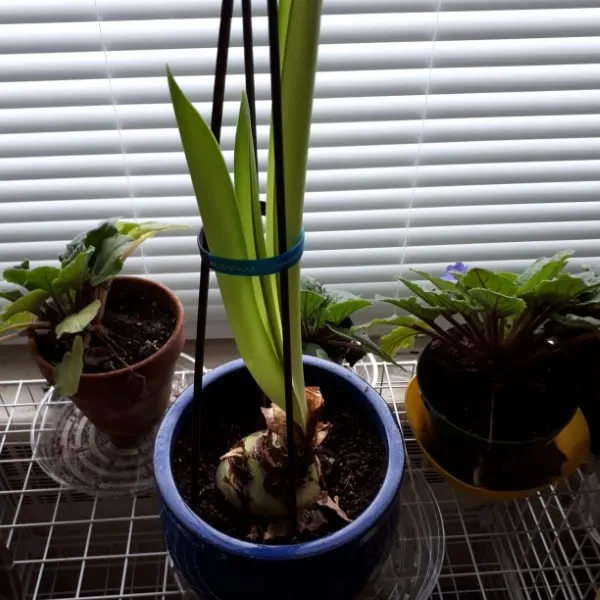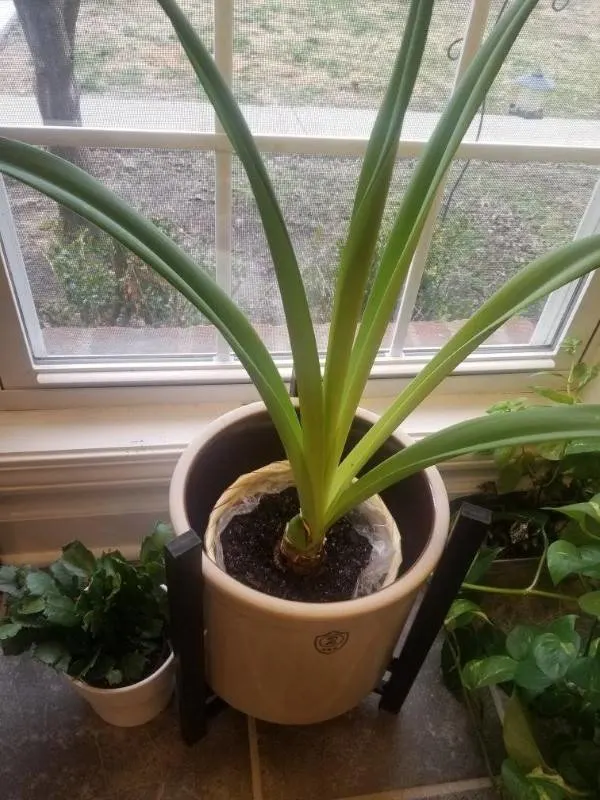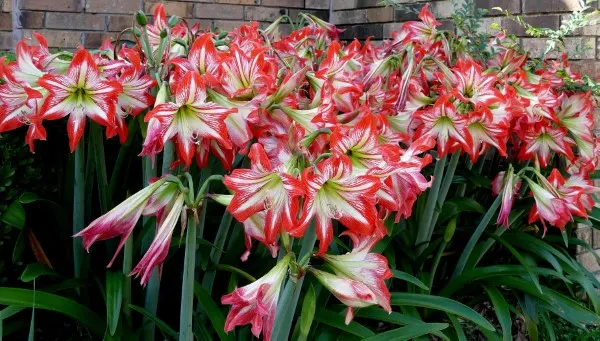Amaryllis is a perennial flowering plant, with each bulb being 3-11 cm in diameter. It produces narrow, flat, green leaves and blooms in different colors.
This succulent is such a worthy choice for anyone who desires a plant to brighten a winter windowsill since it is likely to bloom during winter when other houseplants are resting.
Although Amaryllis is an easy-to-care plant that usually does not need extra attention and care, many gardeners worry that their plant will only produce leaves and no flowers.
So, why Amaryllis will not bloom? Here’re some most reasonable causes and golden tips to ensure a healthy Amaryllis year-round.

6 Possible Reasons Why Amaryllis Will Not Bloom
When it turns out that Amaryllis grows leaves but does not bloom, it is a common sign that the plant was not provided with adequate care and growing conditions for it to thrive.
Insufficient light
One of the biggest reasons Amaryllis is not blooming is the lack of light.
As a succulent, Amaryllis requires an appropriate amount of sunlight, typically at least 6 hours of sunlight daily. It prefers indirect sunlight or a partially shady spot. But dark or dim light is unsuitable for this plant and can make the flowers not bloom.
Meanwhile, more than 4 hours of direct light can also have an opposite effect, causing the leaves to burn.
Inappropriate soil
Although Amaryllis can survive in water and regular succulent soil, it needs a suitable growing medium to produce vibrant flowers.
Unlike some succulents that grow best in gritty soil, Amaryllis tends to develop in nutrient-rich soil. A suggested mix for the plant could be 2 parts loam, 1 part perlite, and 1 part rotted manure, creating an ideal balance for organic matter and draining requirements.
Incorrect temperature
Amaryllis is a tropical or subtropical plant; thus, the plant does not respond positively to low temperatures.
On the other hand, it requires warm temperatures to survive. Therefore, it should be grown outdoors in USDA climate zones 9 through 11.
Although some gardeners may try to grow the plant in climate zone 8, it’s vital to relocate the plant indoors when winter arrives and only bring it back outdoors in warmer months.
The best temperatures for this succulent are between 70° and 90°F. Temperatures below or above these ranges can stunt the plant’s growth or cause it to die eventually.

Overworked bulb
Another potential reason why Amaryllis will not bloom is an overworked bulb. This means when Amaryllis grows leaves with no flowers, some owners may force the plant to rebloom too quickly. But, this can accidentally damage or hurt the plants while it is in the growing process.
Once Amaryllis has bloomed, and the flowers die, it will approach its natural dormancy stage, lasting around 2-3 months. During this time, the bulb takes time to gain nutrients to prepare for a new growth cycle. Therefore, allowing the plant to rest when it enters a crucial dormant period.
Another important thing to note is that never fertilize Amaryllis when it enters its dormancy as this can reactivate the bulb. This is common as several Amaryllis owners who confront blooming issues will unintentionally fertilize their Amaryllis when the plant demands a rest.
Incorrect watering
This is also a possible cause for non-blooming Amaryllis. Although the plant needs regular watering during growth, it requires less watering when in rest.
Hence, as long as the soil is moist, the Amaryllis won’t need to be watered until the new growth begins, unless the temperatures are higher than usual, causing the plant to dry out faster.
Immature bulb
Several Amaryllis plants will not bloom during their first few years because the plant may require a period, around a few years, to mature before it achieves beautiful flowers.
Hence, there is nothing to do to make an immature plant bloom except wait. Be patient and allow it to reach its maturity before blooming. In case you don’t want to wait, buy mature bulbs in the first place, so it is likely to start the growing process right away.
3 Golden Tips To Ensure Amaryllis Bloom Beautifully
Firstly, ensure to provide Amaryllis with sufficient growing conditions such as water, light, and nutrients so it can thrive and be ready to bloom. If the leaves appear natural green and stand straight, it is a sign that the plant remains fresh and healthy.

However, if the leaves show signs of distress such as wilting, yellowing, or turning brown, the plant may have faced troubles. This time, gardeners may need to find out the particular problems and solutions to prevent further damage.
Secondly, it is not recommended to force Amaryllis to bloom or re-bloom because it may not have enough time to store its nutrients, resulting in all leaves with no flowers.
Last but not least, it is advised to repot Amaryllis bulbs every 3 or 4 years to revitalize the soil and create ample room for the bulb to grow.
But remember to repot the plant after the dormant stage, when new growth appears. Additionally, choose a larger pot than the old one with drainage holes to avoid root rot. Also, enriching the potting soil mix with perlite will be ideal for Amaryllis.
After repotting, make sure to set the plant in a location that receives bright, indirect sunlight and follow an appropriate watering routine. After 6-8 weeks, a thick flower stalk is likely to emerge, followed by the flat leaves. Once it begins to bloom, it tends to flower for 7 weeks or more.
Final Words
In conclusion, there are several reasons why Amaryllis will not bloom. Still, it is necessary to identify the causes of non-blooming bulbs and opt for suitable measures to deal with the problems.
Also, remember that Amaryllis requires at least 8 weeks of rest or dormancy before blooming again, so always give it time to rest and gather resources in preparation for a new beginning ahead.
Raising Amaryllis will take time and effort, but the result is rewarding when you see a vibrant variety of flower shades, from red, orange, or pink.
